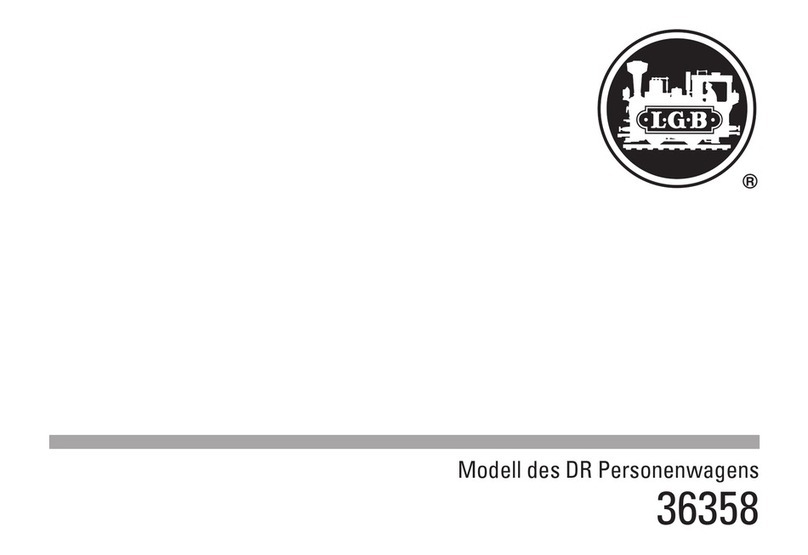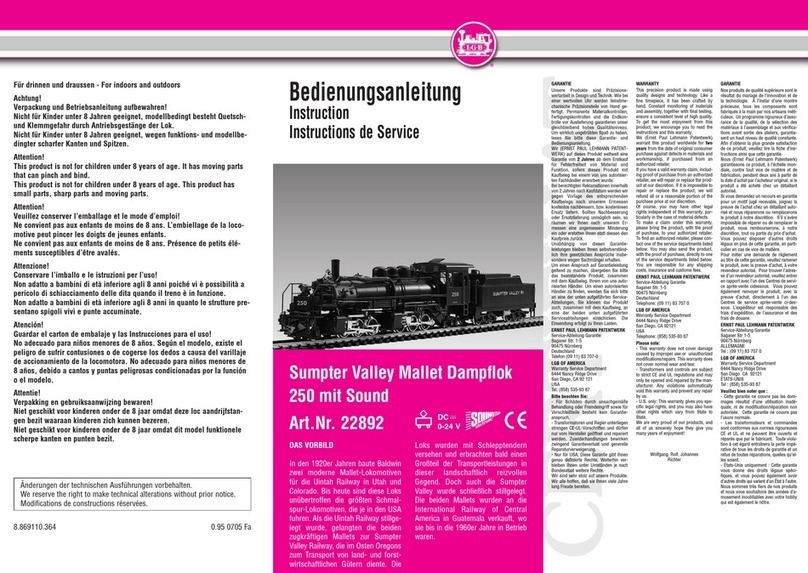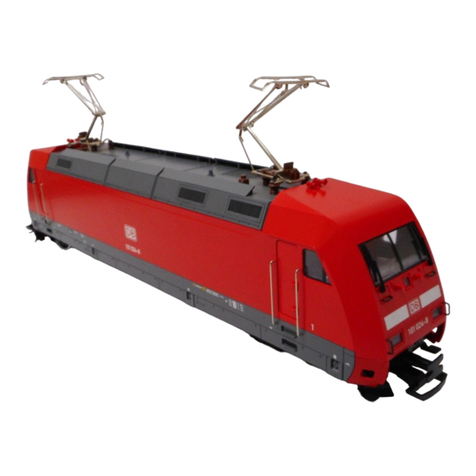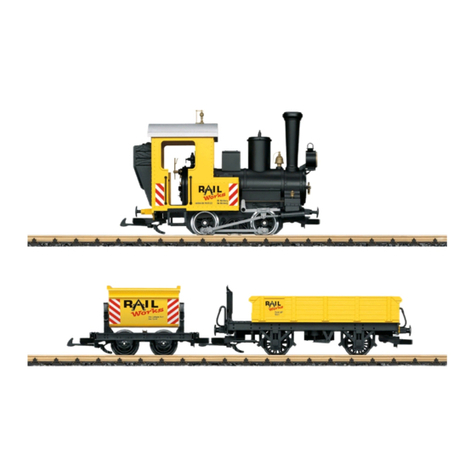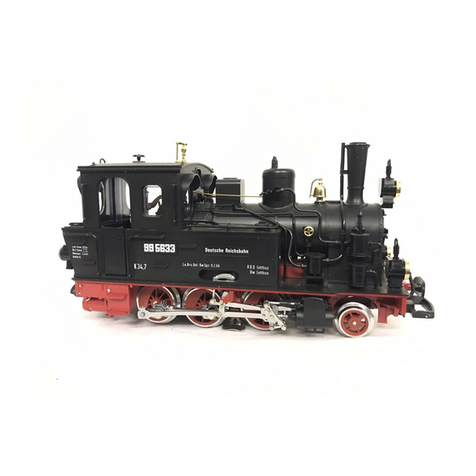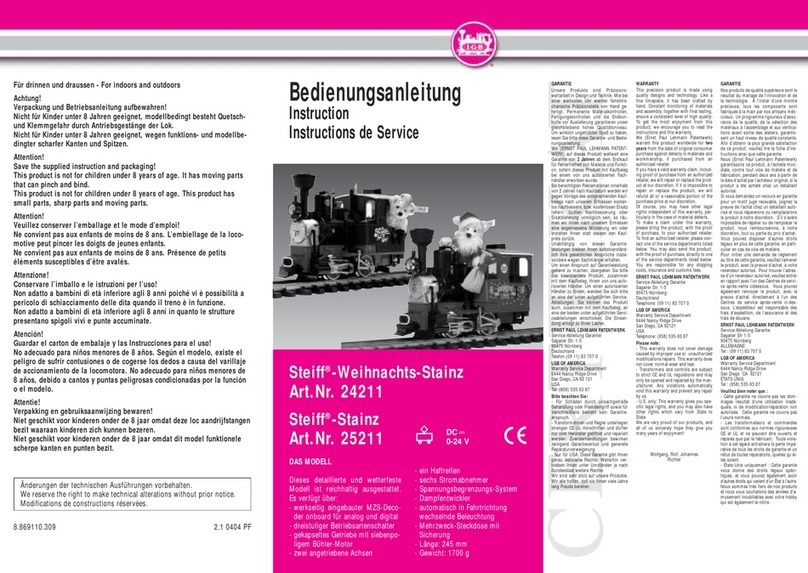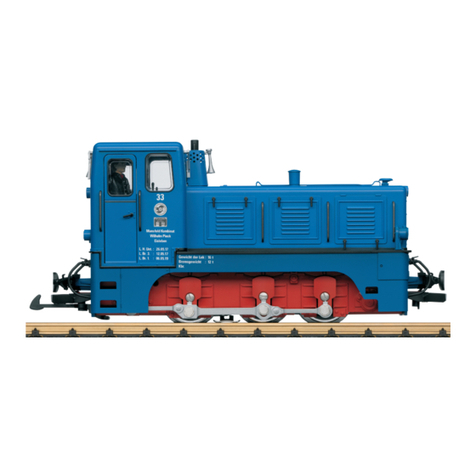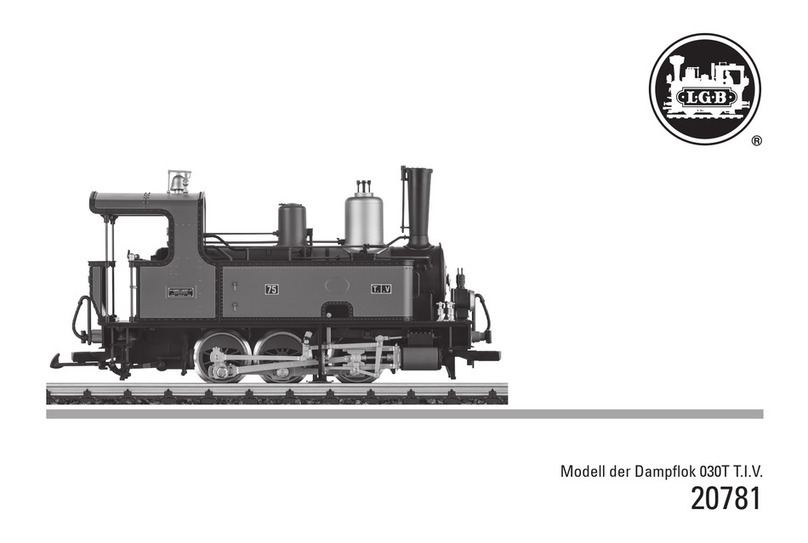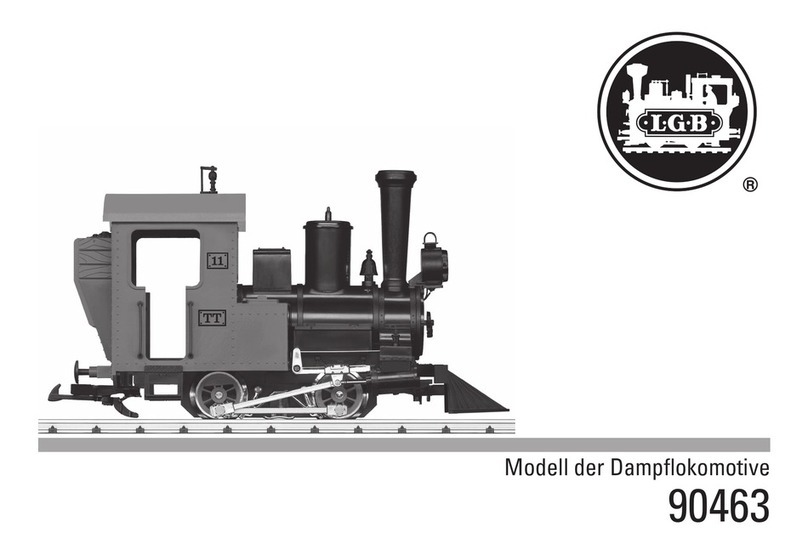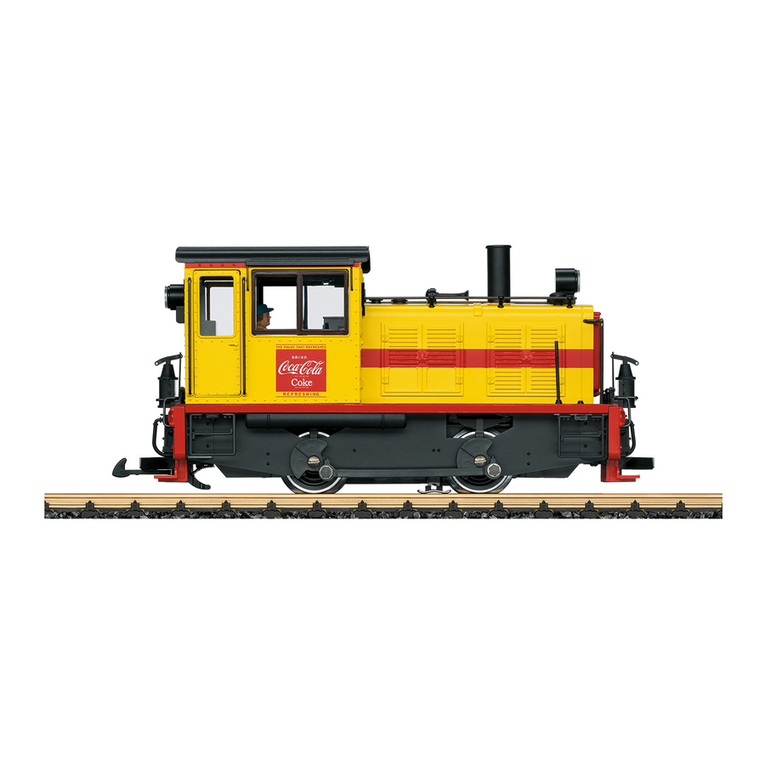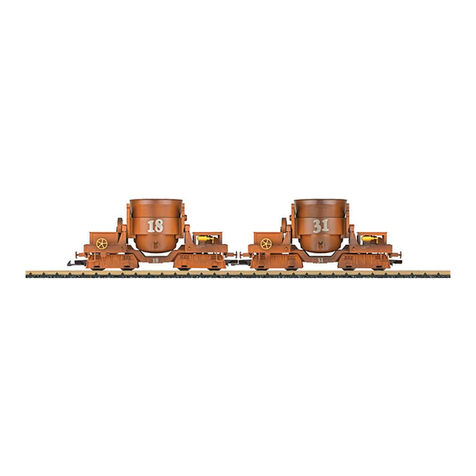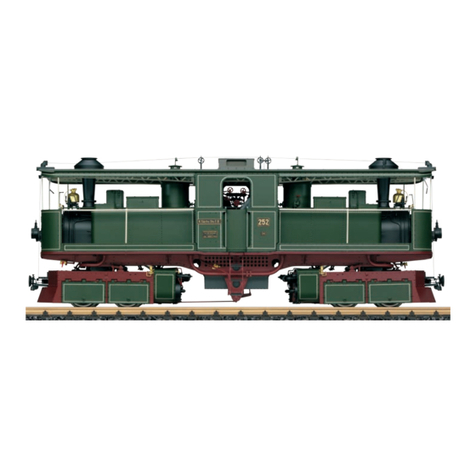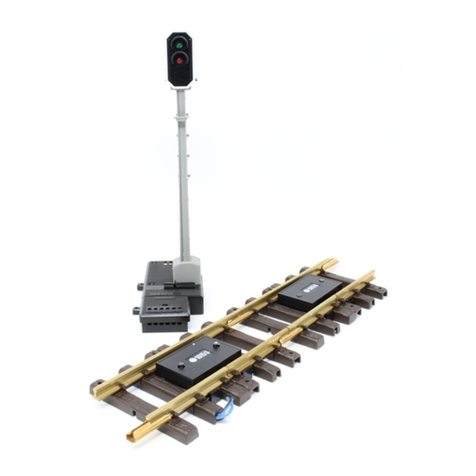4
Sicherheitshinweise
• DasModelldarfnurmiteinemdafürbestimmten
Betriebssystem eingesetzt werden.
• NurSchaltnetzteileundTransformatorenverwenden,
die Ihrer örtlichen Netzspannung entsprechen.
• DasModelldarfnurauseinerLeistungsquelleversorgtwerden.
• BeachtenSieunbedingtdieSicherheitshinweiseinderBedienungsanleitungzu
Ihrem Betriebssystem.
• NichtfürKinderunter15Jahren.
• ACHTUNG!FunktionsbedingtescharfeKantenundSpitzen.
Wichtige Hinweise
• DieBedienungsanleitungistBestandteildesProduktesundmussdeshalbaufbe-
wahrt sowie bei Weitergabe des Produktes mitgegeben werden.
• GewährleistungundGarantiegemäßderbeiliegendenGarantieurkunde.
• FürReparaturenoderErsatzteilewendenSiesichbitteanIhrenLGB-Fachhändler.
• Entsorgung:www.maerklin.com/en/imprint.html
Funktionen
• DasModellistfürdenBetriebaufLGB-Zweileiter-Gleichstrom-Systemenmit
herkömmlichenLGB-Gleichstrom-Fahrpultenvorgesehen(DC,0-24V).
• WerkseitigeingebauterMultiprotokoll-Decoder(DC,DCC,mfx).
• ZumEinsatzmitdemLGB-Mehrzugsystem(DCC)istdasModellaufLokadresse03
programmiert.ImBetriebmitmfxwirddieLokautomatischerkannt.
• VeränderbareLautstärkederGeräusche
• DieFunktionenkönnennurparallelaufgerufenwerden.DieseriealleFunktionsaus-
lösungistnichtmöglich(beachtenSiehierzudieAnleitungzuIhremSteuergerät).
Hinweis:VerwendenSiefürdiesesModelleinFahrgerätmitmehrals1AFahrstrom.
Betriebsartenschalter
DasModellhatzweiBetriebsartenschalterimFührerstandmitdemLokführer(Bild
1).MitdemoberenSchalterstellenSieein,obdasModelldenFahrstromausden
GleisenoderausderOberleitungbezieht(Bild3).
StellungU:StromversorgungausdenGleisen
StellungO:Oberleitungsbetrieb
MitdemunterenSchalter(Bild1,2)könnenSiefolgendeFunktionenwählen:
Pos.0 Lokstromlosabgestellt
Pos.1 Lokmotoren,Sound,BeleuchtungundSteuerungderPantographensind
eingeschaltet
Pos. 2 & 3 wie Pos. 1
Stromversorgung aus der Oberleitung
DieseLokomotivekannihrenStromüberdieLGB-Oberleitungerhalten(siehe
Betriebsarten).AufderUnterseitedesModellsisteinroterPunkt.DasModellsoauf
dieSchienenstellen,dassderrotePunktzuderSchieneweist,dienichtmitdem
Oberleitungs-Trafoverbundenist(Bild3).
VORSICHT! Eine Oberleitung darf nur im Analogbetrieb zur Stromversorgung ver-
wendet werden. Im Digitalbetrieb muss das Fahrzeug aus den Schienen mit Strom
versorgtwerden,dasonstgefährlicheSpannungenentstehenkönnen.
Mehrzwecksteckdose
DasModellhatanderVorder-undRückwandjeweilseineMehrzweck-Steckdosefür
Flachstecker(Bild4).WennSieeinenWagenmitInnenbeleuchtungodermiteinem
Sound-Modulausrüsten,sokönnenSiedieshieranschließenundsomitGleisspannung
versorgen. Dazu die Abdeckung von der Steckdose abziehen. Sollte die Abdeckung zu
festsitzen,diesevorsichtigmiteinemkleinenSchraubenzieherheraushebeln(jedoch
nichtdasäußererechteckigeGehäuseherausziehen).
Elektronischer Sound
DasModellhateinenLautstärke-ReglerinFahrtrichtunglinkshinterdemersten
Drehgestell(Abb.5).
DiePfeifekannauchmitdembeiliegendenLGB-Sound-Schaltmagneten(17050)
ausgelöstwerden.DerSchaltmagnetlässtsichzwischendieSchwellendermeisten
LGB-Gleiseklipsen.DerMagnetbendetsichseitlichversetztunterdemeinge-
prägtenLGB-Logo.PlatzierenSiedenMagnetenmitdemLogoaufderrechtenSeite
desGleises,umdiePfeifeauszulösen,wenndieLokdieseStelleüberquert.
Pantographen
Dieses Modell ist mit elektronisch gesteuerten Pantographen ausgestattet. Ent-
sprechend der Fahrtrichtung wird automatisch der jeweils hintere Pantograph hoch
gefahrenunddervorderegesenkt(Funktion7).AlternativkönnendiePantographen
auchmanuell(Funktion3)hochgefahrenwerden.ImAnalogbetriebistdie
Funktion 7 aktiv.
DiePantographenkönneninderunterenStellungxiertwerden,indemsieindie
Halterungen eingeschnappt werden.






